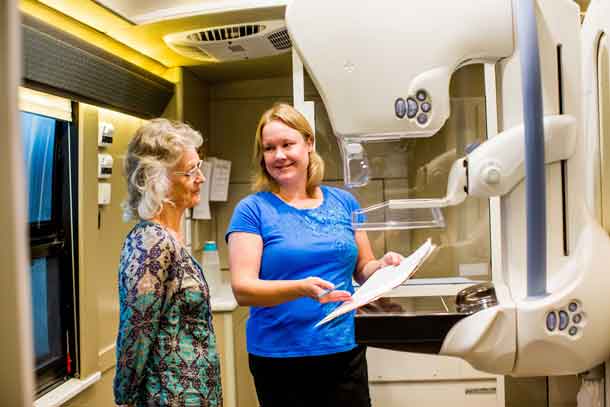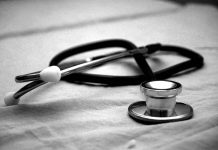
By Dr. Nicole Zavagnin
Please Note: This is the second in a two-part series on breast cancer screening FAQs by Dr. Zavagnin.
THUNDER BAY – October is Breast Cancer Awareness Month and Dr. Nicole Zavagnin is encouraging women to get screened for breast cancer. In this two-part article series, Dr. Zavagnin, Regional Primary Care Lead with Cancer Care Ontario and Prevention and Screening Services at Thunder Bay Regional Health Sciences Centre, answers some of the most frequently asked questions about breast cancer prevention, screening and risk.
- I have heard that a baseline mammogram is a good idea, is this important? When should I do it? Do I need a referral?
A ‘baseline’ mammogram is your first mammogram. If you are at average risk for breast cancer, routine screening begins at age 50. If you are found to be at high risk, this would occur earlier.
Eligible average risk women can access mammography for screening purposes with or without a physician referral through the Ontario Breast Screening Program (OBSP). For high risk screening a health care provider referral is required.
- Is there any risk associated with having a mammogram? (i.e. Radiation, damage to tissues – particularly if you plan on having children)
Radiation is present in our daily environments, exposing everyone to low doses on a daily basis.
Mammography equipment uses very low doses of radiation. What is most important to know is that mammograms often find breast cancers before they cause symptoms or before they are able to be detected on exam. If breast cancers are detected early, they are easier to treat. Therefore, the overall benefits of mammography are said to outweigh the risks of any radiation exposure.
There is no evidence that mammography affects a woman’s ability to breastfeed or causes tissue damage due to compression. For women with breast implants extra care is taken when compressing to avoid any potential damage to the implant.
Read more by visiting, http://bit.ly/mammographyinfo.
- How do you recommend speaking with your family doctor about risk of developing breast cancer?
Breast health is a part of your overall health, and primary care providers are well-trained in discussing cancer risk and the appropriate screening options available for women.
One option to aid in this discussion is to complete a personalized risk assessment using www.mycanceriq.ca and bring the results to an appointment to discuss breast cancer screening. During your well woman visit, when you turn 50, or if you have a positive family history or other risk factors, ask your primary care provider ‘When, where and how should I be screened for breast cancer?’.
- If, in the case of the patient, mammography isn’t appropriate, what should women know about breast health?
There are few cases where mammography cannot be used or mammography alone is not appropriate. If this is the case, a woman should discuss any other potential screening tests and how to monitor her breast health with her health care provider.
It is important for all women to be breast aware, regardless of their age or risk factors. This means knowing how your breasts look and feel normally so that you will know if there are any changes. Examples of concerning breast changes include: lumps or dimpling, changes in the nipple (direction or turning in), fluid leakage from the nipple, skin changes or redness that do not go away, and any other breast changes. In most cases, changes are not signs of cancer, but it is important to have them checked by your primary care provider to be sure.
Maintaining a healthy lifestyle may help you reduce your risk of breast cancer:
- Maintain a healthy body weight, especially after menopause.
- Be physically active.
• Have no more than one alcoholic drink per day, if at all.
• Be a non-smoker and avoid second-hand smoke. - Limit your time on hormone replacement therapy (if used), and
- Talk to your provider about appropriate breast screening.
Book your breast cancer screening appointment today by calling (807) 684-7777 or 1-800-461-7031. Find our more information about breast cancer screening by visiting http://bit.ly/justbookit.






